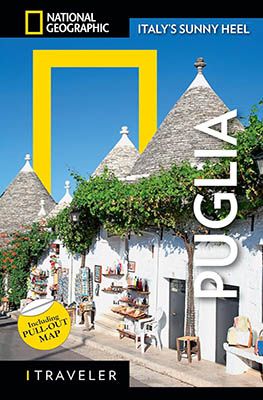Otranto boasts a beautiful location on the coast of the Adriatic Sea. It is the most easterly town in Italy, giving it a particularly strategic position. A large castle, Castello Aragonese, serves as the gateway to the town centre. Imposing city walls protect the city from surrounding dangers, preserving a medieval atmosphere.
It’s early April, and the temperature is exceptionally pleasant at around 20 degrees with a delightful sunshine. As we explore the town, we stumble upon an impressive event from the past…
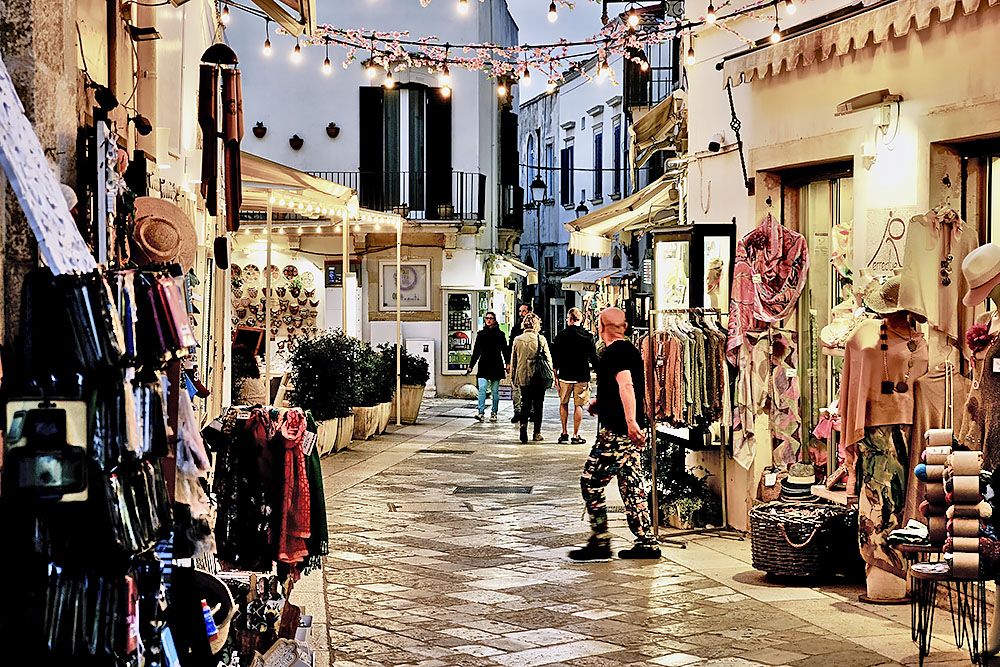
Otranto takes us back in time
Entering the old town of Otranto through the grand castle, we find ourselves in a different world with narrow streets and small shops, much like it was in the medieval era. Visitors stroll through the streets, creating a relaxed atmosphere. The town centre sits several dozen meters above sea level, offering breathtaking views from the seafront squares. The sea displays a deep azure blue color and is incredibly clear, with the occasional fishing boat bobbing on the horizon.
The numerous restaurants and bars clearly indicate that this is a popular tourist destination. Arriving around midday, many waiters invite us to sit on the terrace. It’s the pre-season, and the tourist flow has yet to pick up. And what do you prefer to eat in a seaside town? Indeed, seafood. Various types and preparations of squid are widely available here. A squid sandwich (‘pucce pulpo’) as a snack? No problem, it’s available almost everywhere.
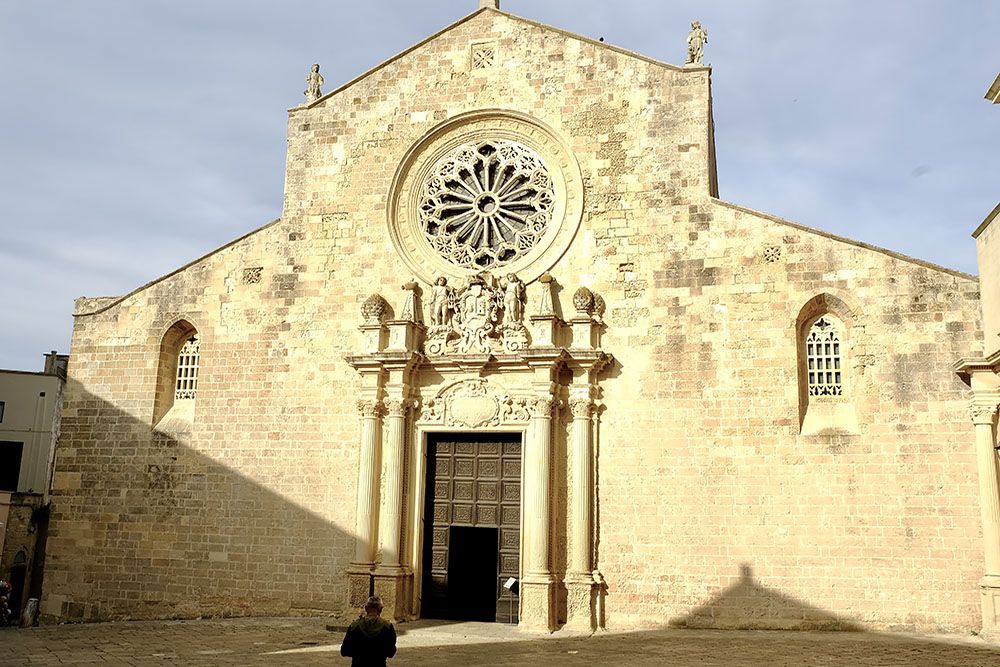
The cathedral of Otranto
Leaving the shopping streets in the well-organized centre, we quickly arrive at the cathedral. Built around the year 1068 on the ruins of a Roman house, the construction took twenty years to complete. The exterior of the building doesn’t make a particularly striking impression, that comes later when you see the inside. Beneath this church lies a large crypt, essentially a church under the church. The floor space above is enormous. And what a floor?
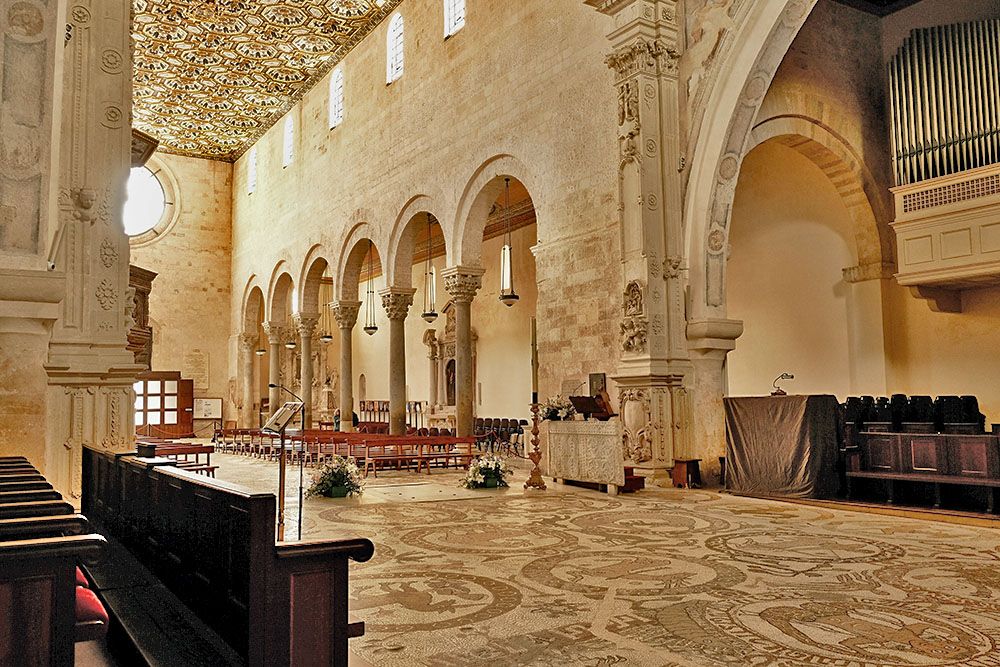
The ground floor features an impressive mosaic. After three years of hard work, it was completed in 1166. The mosaic depicts many stories from the Bible. It is truly a labor of love. For those interested: it used over 600,000 tiles.
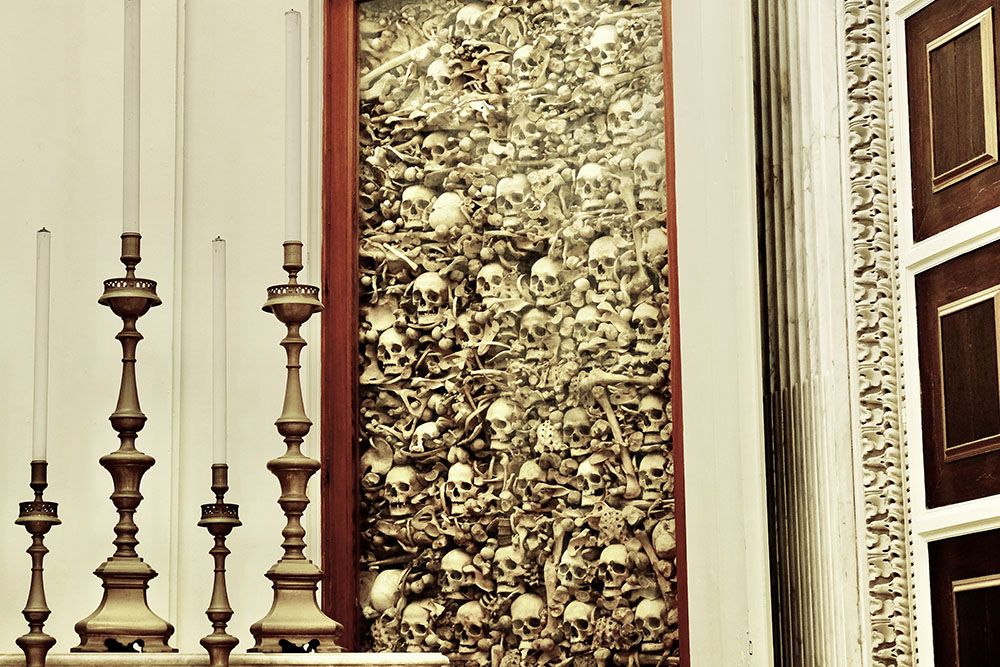
Visiting the cathedral leads us to a separate chapel. There, we suddenly find ourselves gazing in amazement. Three enormous display cases filled with human bones dominate the space. They are the remains of residents after a true massacre. This was carried out by the Turks who invaded Otranto in 1480. People were captured, traded as slaves, or killed. A group of over 800 inhabitants tried to protect themselves from this violence in the cathedral, to no avail. The occupiers presented the people in the church with a choice, convert to Islam or die. The result was the beheading of 800 residents. These are the martyrs of Otranto. This history shows that the town has experienced more than its picturesque appearance might suggest.
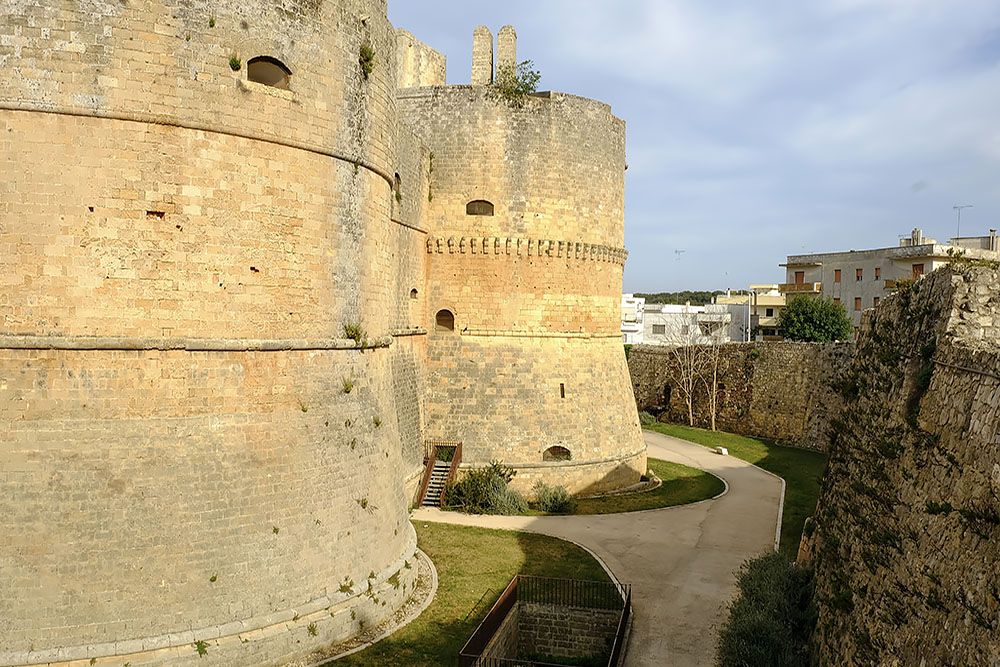
Other attractions in Otranto
The grand castle of Otranto, Castello Aragonese, is unmissable. Upon entering the old town from the harbour side, it is a defining feature. Access to the town centre is through a footbridge that is part of the impressive defensive structure. This castle is where the first written Gothic novel took place: ‘The Castle of Otranto’ by the writer Horace Walpole. It involves medieval horror literature. In reference to this milestone, there is a section that looks like a bookstore inside the castle, which is free to visit. Viewing the exterior is impressive due to its height and size. With an entrance ticket, the interior can also be explored.
During a stay in Otranto, it’s tempting to repeatedly seek out the beautiful streets and viewpoints. When the sea water temperature is a bit higher, visiting the town beach and enjoying the clear water is tempting.
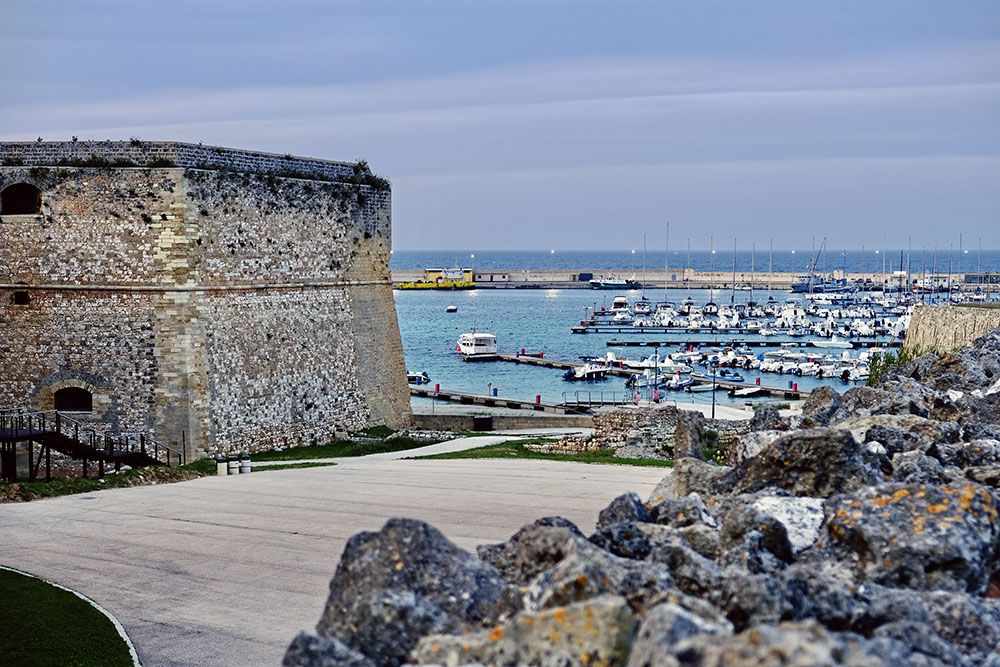
The harbour of Otranto is also worth a visit. On the way from the town to the harbour, there is a unique artwork to see. It is made from an old fishing boat. Ferries depart from the harbour, including those to Corfu. Most boats are waiting for their owners in April. A few fishing boats provide direct fish supplies.
Inspired by the story of the martyrs, we visit the church of Santa Maria dei Greci. It is located on a slight elevation on the southern side of Otranto. This is where the beheading of the 800 martyrs took place. However, the church and the monastery are closed, so this visit doesn’t yield much.
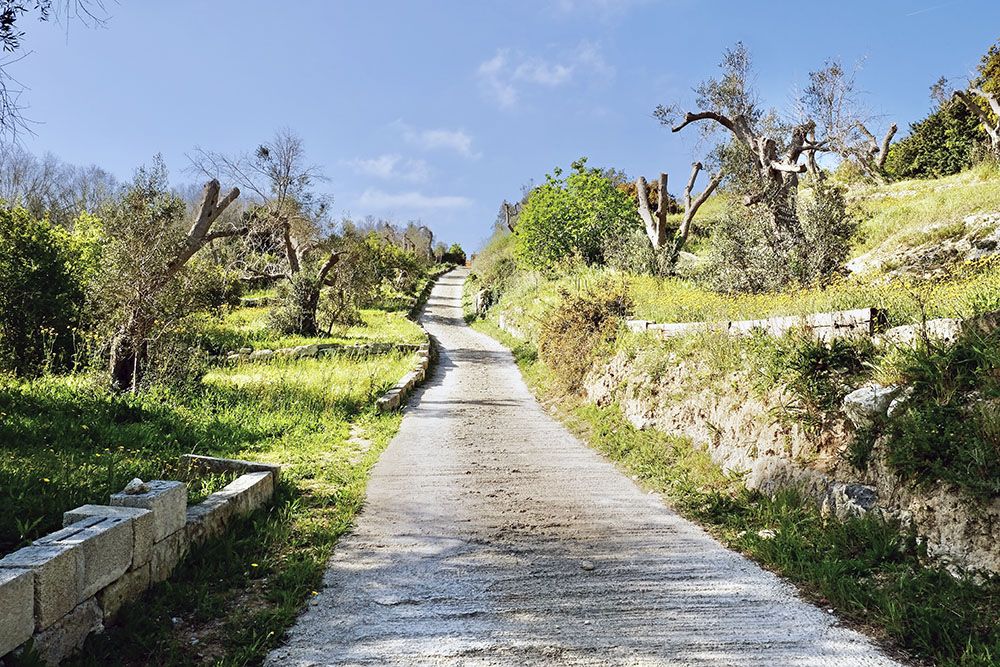
The surroundings of Otranto
As preparation for a long coastal walk, we take a stroll in the vicinity of Otranto. The starting point is at the enormously large city gate on the north side, the Borgo Antico. From the town, we walk into the valley of the river Idro. It’s a well-trodden path in a gently hilly environment. The abundance of flowers in early April is impressive. Borage, wild geraniums, poppies, and wild hollyhocks fill the fields.
It forms a sharp contrast with the condition of the olive trees. A large part of the orchards has been affected by a bacterial plague (Xylella). The trees dry out from the inside, causing even centuries-old specimens to wither. We see that various methods have been tried to combat this disaster. Pruning, burning, or just letting it be. Occasionally, we see an olive grove in a healthy state, but most have been affected. Thus, nature shows itself from multiple perspectives.
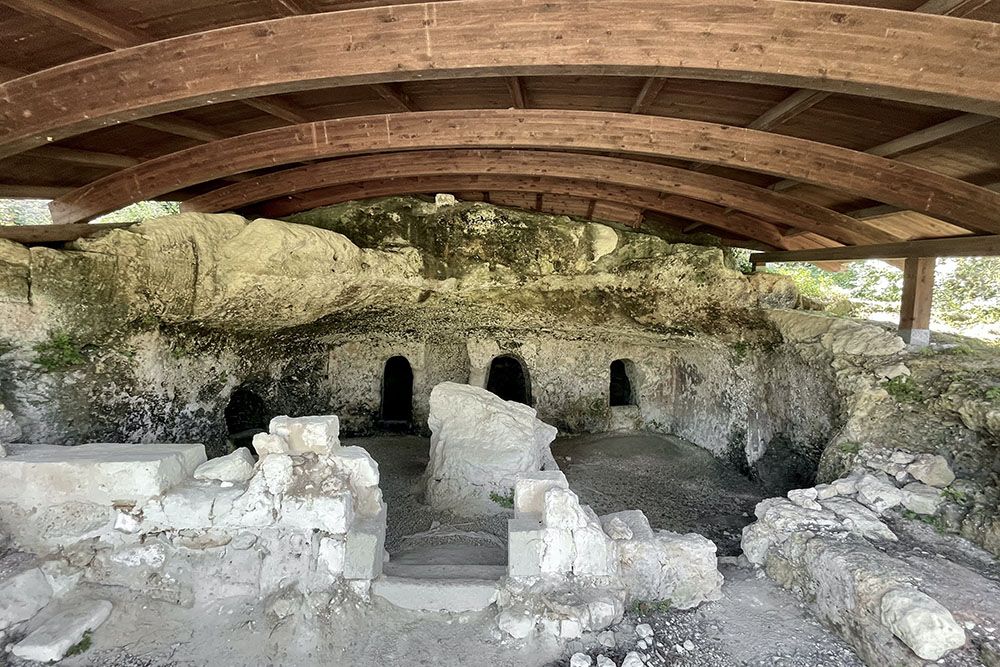
We come across the remains of a church carved into a cave from the 8th century. It’s a unique place that can be easily accessed. The remnants of frescoes are clearly visible. It feels like entering an archaeological site.
After two hours, we return to the centre of Otranto from the hilly surroundings. We pass by the ‘Mercato’ and take a look inside. A proud vendor shows us how fresh all his products are. He even shows a large supply of freshly risen dough for homemade bread rolls. We order some rolls and have a small wine. We enjoy them on a bench in the park opposite the Mercato. Many passers-by greet us with ‘salute’.
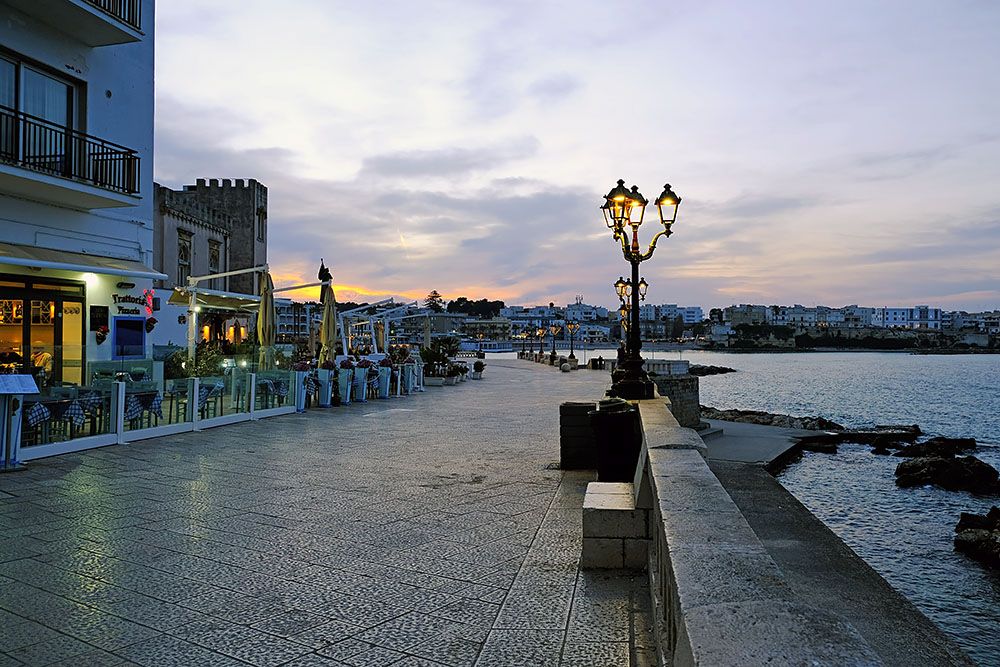
Overall impression of Otranto
After two days in this place, we have a pleasant impression of a beautiful and charming town. Especially the old town is an area that naturally draws you in. The views of the sea, the coastline, and the authentic centre contribute to this. The less touristy area outside the town is also attractive to visit. A place that certainly deserves a few days’ stay.
Answers to practical questions when visiting Otranto
Otranto is situated in the Lecce region of the province of Puglia, in the southernmost part of the heel of Italy.
The quickest option is by plane to Bari or Rimini. However, Otranto can also be reached by train. You would then travel via Lecce to Otranto.
There is a large parking area at the harbour where you can park at a low rate. If you need to park the (rental) car for a longer period, at the south side, you can park at Parking Rens for €5.00 per day. There is supervision. Additionally, there are several (including private) parking providers.
The town itself is worth seeing, but from this place, you can also take walks and boat trips at sea. By car, you can reach Lecce in just half an hour. By train, this takes 1.5 hours.
In Otranto, there are plenty of accommodation options. Here's am overview of accommodations in Otranto.

